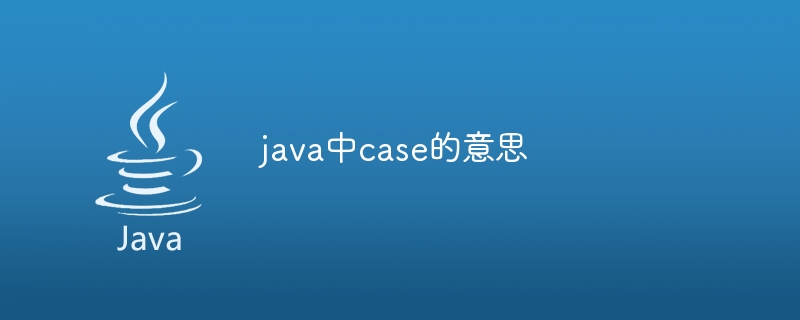Home >Java >javaTutorial >The meaning of case in java
The meaning of case in java
- 下次还敢Original
- 2024-05-01 17:42:341297browse
In Java, case is the keyword of the switch statement, which is used to specify the code block to be executed. It is executed when the case value matches the value of the switch expression. The syntax is: switch(expression) { case value 1: // Code block 1; break; case value 2: // Code block 2; break; ... default: // Default code block }. Each case value must be unique. You can use the break statement to exit the switch statement. Without break, subsequent cases will continue to be executed.

The meaning of case in Java
case is a keyword used in the switch statement in Java .
Function:
- The case clause is used to specify the code block to be executed by the switch statement.
- It matches the case value in the switch statement. When the case value matches the result of the switch expression evaluation, the code block associated with the case clause is executed.
Grammar:
<code class="java">switch(switch_expression) {
case value1:
// 代码块 1
break;
case value2:
// 代码块 2
break;
// 其他 case 子句 ...
default:
// 默认代码块
}</code>
Example:
<code class="java">switch (grade) {
case 'A':
System.out.println("优秀");
break;
case 'B':
System.out.println("良好");
break;
case 'C':
System.out.println("及格");
break;
default:
System.out.println("不及格");
}</code>
Notes:
- Each case clause must have a unique case value.
- case value can be a basic data type (such as int, char) or String.
- There is an optional default clause at the end to handle situations where no case value is matched.
- The break statement can be used to explicitly exit the switch statement. If there is no break statement, the subsequent case clause will be executed.
The above is the detailed content of The meaning of case in java. For more information, please follow other related articles on the PHP Chinese website!

